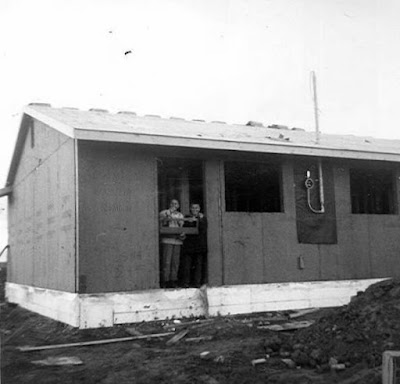2025
52 Ancestors in 52 Weeks
Week 17
Prompt – Oldest
In my search for my oldest dated
photograph, I came across this one.
 |
| April 20, 1890 - Emilie and Johann Jahnke Wedding Portrait |
Bill's maternal great-grandfather was
Johann Friedrich Jahnke.
His story comes from an oral history
given to my sister-in-law by her grandfather, Arthur Jahnke, about
his memories of his father, mother and brother. The history was given
in January of 1976. That is almost 50 years ago. Imagine if my
sister-in-law had not written this history. So many of the
anecdotes would be missing.
Johann Friedrich Jahnke was born on
November 25 ,1863, in Bromberg Stadt, Posen, Prussia.
His father Julius Jacob Jahnke was born
circa 1837, in Prussia, Germany.
His mother Augusta Radel was born on
August 15 1834, in Germany.
He was baptized on December 21 1863, in
Bromberg Stadt, Posen, Prussia.
He had 4 siblings: Leonhard Heinrich,
Louise Carolyn, Bertha and Mathilde Albertine.
Johann Jahnke began his 3 year
compulsory German Military Service on Nov 7,1884. He completed it on
Sep 7, 1887.
His wife Ernestine Emilie Hein / Heyn
was born on April 29 1857, in Bromberg Stadt, Posen, Prussia.
They were married on April 20 1890, in
Bromberg, Prussia, and they had 2 sons: Leonhard Ferdinand (born in Prussia) and Arthur Jahnke (born in Winthrop Minnesota).
Johann Jahnke and his family departed from Antwerp, Belgium on the Ship - Belgenland and arrived in Philadelphia, Pennsylvania, United States on 9 Nov 1891.
After immigration in November of 1891,
they settled in Winthrop, Minnesota, United States.
After 4 or so years, Johann Jahnke and his family moved (by covered wagon) 350
miles away to Ulen, Minnesota in 1896 where he bought a farm and
built a two story frame house using only a hatchet and a saw.
In the spring of 1903 Johann Jahnke and
his family immigrated to Killaly, Northwest Territories (now
Saskatchewan). This move was made by train. Emilie and Arthur went as
passengers and Johann and Leonhard went as freight in order to stay
with the horses, cows and machinery. He paid $10.00 for his homestead
of a 1/4 section. He started to build a wooden frame house buying the
lumber from the proceeds of the sale of his farm in Ulen. He seeded
his first crop in 1905 and then in 1906 he bought another 1/4 section
of land.
In 1911 Johann Jahnke sold his farm in
Killaly and bought land in Entwistle, Alberta. This was in order to
help his oldest son, Leonhard start on his homestead.
In 1912, after a failed homestead in Northern Alberta, Johann and his family then
moved to Hatton, Saskatchewan which was 20 miles north of Maple
Creek. Johann built a general store and another frame house.
In 1916, Johann Jahnke decided to move
back to Winthrop, Minnesota. He sold his store to his son Arthur and
Arthur's cousin Julius Jahnke. However instead the family took the
train to Seattle to make a trip of it. Once in Seattle he bought a
1916 Maxwell and started to explore California north and eventually
ended up in Gibbon, Minnesota and bought another store.
In 1926 Johann Jahnke sold his Gibbon
store and moved to Regina, Saskatchewan.
We next pick up Johann and Emilie
Jahnke listed in a 1929 City directory for the city of Yakima,
Yakima, Washington.
In 1935, he lived at the same house -
603 No 5th Ave, Yakima, Precinct 9, Yakima, Washington, USA.
In 1938 Johann Friedrich Jahnke became
a naturalized citizen of United States signing the Oath in November,
1938.
In the 1940 U.S. Census it is written
that he lives at 603 No 5th Ave, Yakima, Precinct 9, Yakima,
Washington, USA.
 |
| April 20, 1940 - Emilie and Johann Jahnke's 50th Wedding Anniversary |
Johann Jahnke passed away on February 3 1945, at
age 81 in Yakima, Washington, USA
Emilie Jahnke died April 5, 1946 in Yakima, Washington.
I was told by mother-in-law, Clara Hoffart, many years
ago that Johann did indeed have an “itchy foot”. She knew that if
he had not been so sick that he would have likely moved again from
Yakima, Washington.
Wendy
























%20%20-%20Family%20House%20on%20Witney%20Ave%20Texted.jpg)

